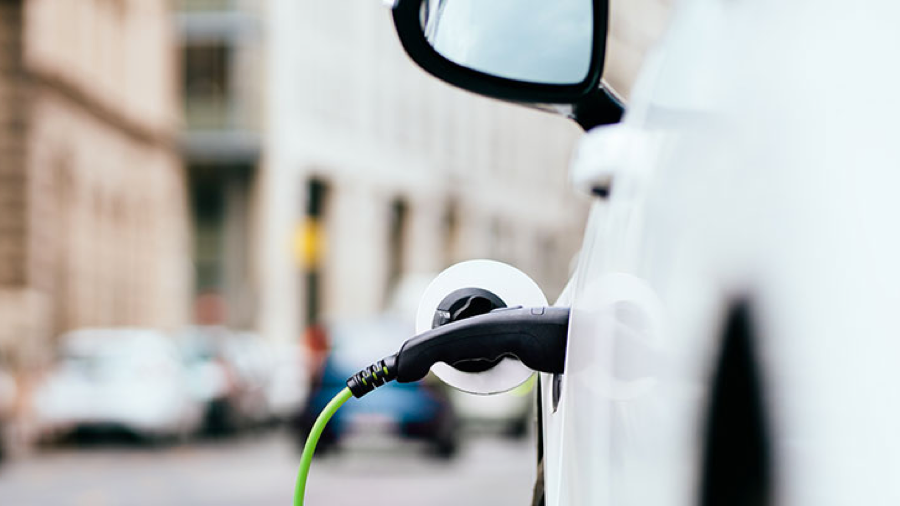Is a small electric vehicle right for you?
Are you ready to go electric?
Want to know if an electric car is the right choice for you?
Join in with our simple online quiz to find out more.
Tesla, VW, Nissan, Citroen electric cars.
As UK electric car sales grow, so does the range of choice. From the ultra-compact Citroen Ami electric quadricycle to luxury SUVs and sports cars.
As major manufacturers such as Citroen, Tesla, Volkswagen, Ford, Kia and Nissan increase investment to widen their electric car ranges, even more models are now available as plug-ins. But with more choice than ever, we look at why small electric cars remain so popular and how they come with big benefits.
What’s driving the popularity of small electric cars?
In August 2023, fully electric cars took their highest monthly market share for the year, accounting for 20.1% of all new car registrations – second only to sales of petrol.
Driving the change are compact electric vehicles, making up three of the UK’s top five best-selling models in 2022. From the nation’s favourite Tesla Model Y – a small, compact SUV to the ever-popular Nissan Leaf.
In June 2023, there were 15 active Clean Air Zones in cities around the UK, including Portsmouth, London, Birmingham and Bristol to Bradford, York, Newcastle and Aberdeen. As more towns and cities place the schemes under consultation, small electric vehicles are capturing drivers’ imaginations.
All electric vehicles emit zero tailpipe emissions and are exempt from taxation and clean air charges. Making them the perfect choice for commuting. While some take urban driving even further. Like the innovative, ultra-compact Citroen electric Ami quadricycle. At just 2.41 metres long and 1.39 metres wide, it’s capable of fitting into even the tightest parking spaces. The Citroen Ami is more accessible in other ways too. That’s because the Citroen Ami UK licence requirement is a Category AM that covers a moped, which is limited to 28mph.

Small in size, big on benefits.
Some say the best things come in small packages. Which certainly explains the benefits of compact electric cars. Starting with affordability.
Lower lease fees and insurance costs make small electric cars the perfect choice for many. From company car drivers looking to save money on tax to younger drivers leasing their first car and families wanting an environmentally-friendly second car. As the UK used electric car market continues to grow, compact electric vehicles generally have slower depreciation rates too.
Small electric cars have smaller batteries. Meaning they need shorter charging times and less electricity. Take this example below:

Model: Mini Electric
Battery: 32 kWh
Range: Up to 145 miles
Home charge fast: 5 hrs 30 mins (based on PodPoint home charger)
Home charge socket: 12 hrs 10 mins (based on home power socket)
Rapid charge: 1 hr 20 mins (based on public rapid charger)
And while these small batteries used to mean limited range, many models now advertise the ability to travel over 200 miles on a full charge.
It’s not just affordability that puts a smile on drivers’ faces. Small electric cars are great fun to drive, with amazing agility and responsive handling. Their lighter weight and compact size creating a nimble driving experience. While their effortless manoeuvrability and tight turning circle make them perfect for driving in towns and cities, where they navigate tight streets and busy car parks with ease.
Small and mighty.
There’s no shortage of choice in the compact electric cars market, with great offerings from all the manufacturers. Small cars are set to get an even bigger boost with as many as 25 Chinese electric car brands coming to the UK market in the next few years.
China is the world’s leading electric car market and accounts for an incredible 60% of global sales. With charging technology and infrastructure already in place, one in four cars sold in China is an EV. This investment is powering new and exciting start-ups, as around 200 manufacturers now drive the market. Sitting on top as the best-selling model is the compact Wuling Hongguan Mini EV.
In the UK, MG has been owned by parent company Shanghai Automotive (SAIC) for 16 years and now accounts for 9.4% of all cars sold in the UK. New arrivals in 2023 will include Ora, a sub-brand of Great Wall Motors, and BYD. While XPeng has already been established in Scandinavia, and is expected to be popular.
Lease with ease.
Powered by LV= General Insurance, we work with lease specialists CBVC to offer a wide range of the latest electric cars, with over 100 models from more than 30 leading manufacturers – including Citroen, Tesla, VW, Kia and Nissan. With many available from stock within just 30 days. We partner with Indra to provide convenient home chargers to energise every journey. And we provide bespoke insurance through Allianz, our digital sister company.
Want to find out more about leasing an electric car from us? Start by clicking here to see our range.
Discover electric cars today
Discover electric cars that are available through our partner CBVC today.
Discover cars available





